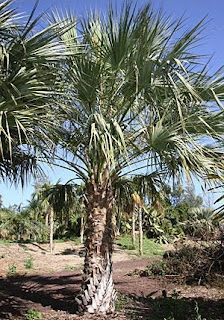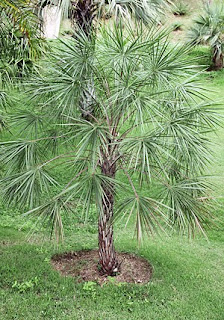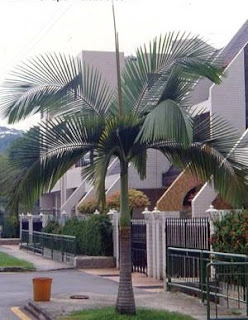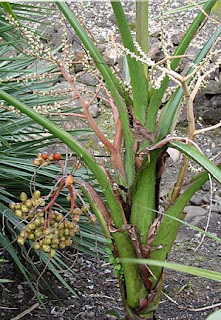Livistona chinensis
Chinese fan Palm, Fountain Palm
A much-loved fan palm that has been popular since Victorian times and
makes a superb potted palm for the home or terrace. In warmer climates
and over a period of years, it grows into a handsome, medium-sized tree
with a slender trunk. The common name is something of a misnomer since
it is actually native to Japan's Ryukyu Islands and Volcano Islands. The
broad, lime green leaves have elegantly drooping and curled tips, which
gives rise to its other name, "Fountain palm." The fruits, which
are produced in large numbers, are blue. Livistona chinensis shows a good
tolerance to cold and frost and may be used in the sheltered temperate
garden, but will also happily accept hot and humid tropical conditions.
Livistona eastonii
Mitchell Plateau Fan Palm
A
medium-sized, slender fan palm native only to the Mitchell Plateau in
the Kimberley Ranges in northern Western Australia, where it grows in
open, seasonally dry Eucalypt forest, occasionally in very dense stands.
It forms a very slender, solitary trunk which with age can reach 20 m
tall and supports a small, open crown of stiff leaves on long stalks. It
is particularly well adapted to fire, which is a rather frequent
occurrence in its habitat and helps the palm to compete with Eucalyptus
and other trees. It is rarely seen in cultivation, perhaps on account of
its slow growth, but would make a nice, robust and drought tolerant
ornamental for the small, tropical garden.
Livistona decora
Ribbon fan Palm
A graceful, very fast-growing, tall palm from eastern Australia with
finely divided, weeping fan leaves. It is easy to germinate, fast and
easy to grow, and very adaptable and hardy in every respect--really a
nearly foolproof palm. It has already been successfully tried as a landscape
and even as an indoor plant on a commercial ba


Livistona lanuginosa
Cape River fan Palm
A robust Livistona from inland areas in N-Queensland, Australia, closely
related to L. mariae. The Cape River fan Palm has fairly stiff, waxy,
blueish leaves and large purplish fruits. It is best suited to drier climates
and quite cold and even frost tolerant. Seeds are rarely available.
sis.
Livistona inermis
Wispy fan Palm
The Wispy fan palm is well named. It has a very narrow trunk and a small
crown of deeply split, fan shaped leaves with very narrow segments.












